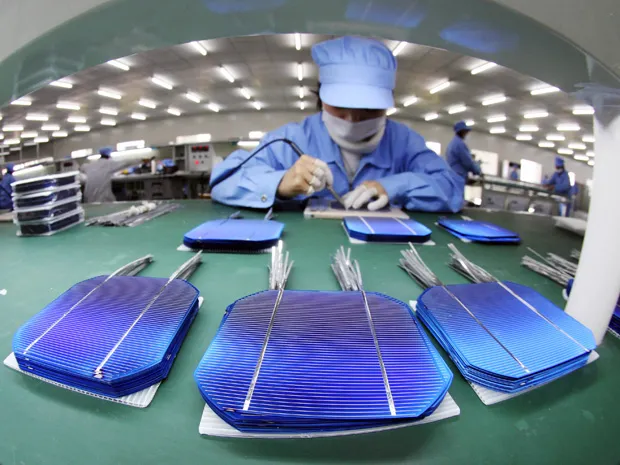
Introduction
Solar energy is gaining significant attention as a sustainable and renewable source of power. However, the production of solar panels comes with its own set of environmental consequences. This article delves into the topic of the environmental impact of solar panel production, highlighting its relevance and importance. By understanding these challenges, we can explore opportunities for mitigating the negative effects and ensuring a more sustainable future.
Historical Background
Solar panel production dates back to the mid-20th century when Bell Laboratories developed the first practical silicon solar cell. Since then, the industry has witnessed substantial growth and evolution. Advances in technology, such as the development of thin-film solar cells and the increasing efficiency of photovoltaic systems, have contributed to the expansion of solar panel production.
Key Concepts and Definitions
To understand the environmental impact of solar panel production, it is important to define key terms and concepts. Solar panel production refers to the entire lifecycle of solar panels, from raw material extraction to manufacturing processes and end-of-life considerations. Environmental impact encompasses the effects on ecosystems, biodiversity, energy consumption, waste management, and more. Life cycle assessment is a methodology used to evaluate the environmental impacts of a product throughout its entire lifecycle.
Main Discussion Points
Environmental Impacts of Raw Material Extraction
The production of solar panels requires the extraction of materials like silicon, silver, and aluminum. The mining and processing of these materials pose significant environmental consequences, including habitat destruction, soil erosion, water pollution, and greenhouse gas emissions.
Manufacturing Processes and Energy Consumption
Solar panel manufacturing involves multiple steps, including wafer production, cell fabrication, and module assembly. Each step requires energy and emits greenhouse gases. Energy-intensive processes like wafer production contribute to the overall carbon footprint of solar panel production.
Waste Management and End-of-Life Considerations
As solar panels reach the end of their lifespan, proper waste management becomes crucial. The disposal of decommissioned panels can lead to environmental contamination and potential health risks. However, there are emerging solutions such as recycling and resource recovery to mitigate these challenges.
Impacts on Ecosystems and Biodiversity
The expansion of solar panel production can impact local ecosystems and biodiversity. Large-scale solar projects may lead to habitat loss and disrupt migratory patterns of wildlife. Implementing proper siting and mitigation strategies can help minimize these impacts.
Case Studies or Examples
Real-world examples help illustrate the environmental impact of solar panel production. Case studies from different regions or countries shed light on specific challenges and solutions. For instance, the rapid growth of solar panel production in China has raised concerns about pollution from manufacturing processes, while countries like Germany have implemented effective recycling programs.
Current Trends or Developments
Recent trends in solar panel production include the adoption of advanced technologies like PERC (Passivated Emitter and Rear Cell) and bifacial modules. These advancements aim to improve efficiency and reduce the environmental impact. Additionally, ongoing research focuses on developing sustainable materials and manufacturing processes for solar panels.
Challenges or Controversies
Challenges and controversies surround solar panel production. Some argue that the environmental benefits outweigh the negative impacts, while others raise concerns about the carbon footprint of manufacturing and disposal processes. Balancing these viewpoints is essential to make informed decisions and drive sustainable practices.
Future Outlook
Looking ahead, advancements in technology and policies will play a crucial role in mitigating the environmental impact of solar panel production. Innovations like perovskite solar cells and the implementation of circular economy principles in the industry hold promise. Additionally, supportive policies and regulations can incentivize sustainable practices and ensure the long-term viability of solar energy.
Conclusion
Understanding the environmental impact of solar panel production is paramount for achieving a sustainable future. By addressing the challenges associated with raw material extraction, manufacturing processes, waste management, and ecosystem impacts, we can work towards minimizing the negative consequences. With continued research, technological advancements, and policy changes, solar panel production can become more environmentally friendly.
References:
- “Environmental Life Cycle Assessment of Crystalline Silicon Photovoltaic Systems” by NREL
- “The International Technology Roadmap for Photovoltaic (ITRPV)” by the European Photovoltaic Industry Association
- “Sustainable Solar Panel Production: A Comprehensive Guide” by Solar Power World
- “Circular Economy Principles Applied to Solar Panel Production” by Fraunhofer ISE
- “End-of-Life Solar Panel Management: Current Status and Future Perspectives” by Renewable and Sustainable Energy Reviews